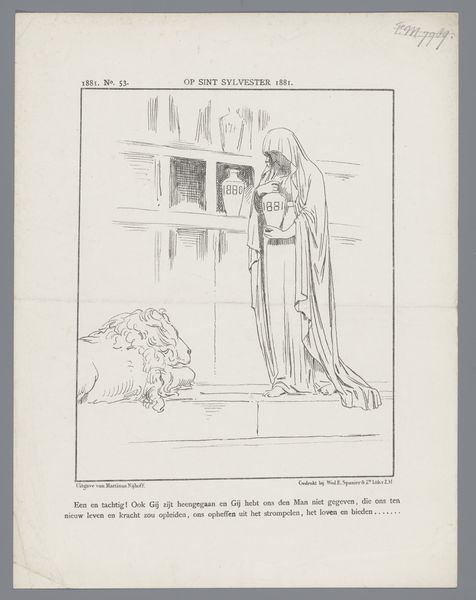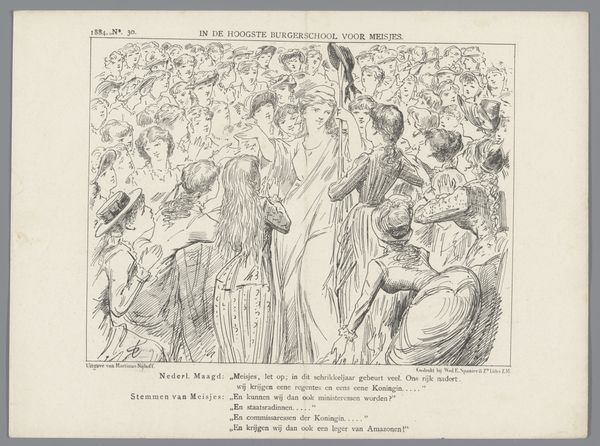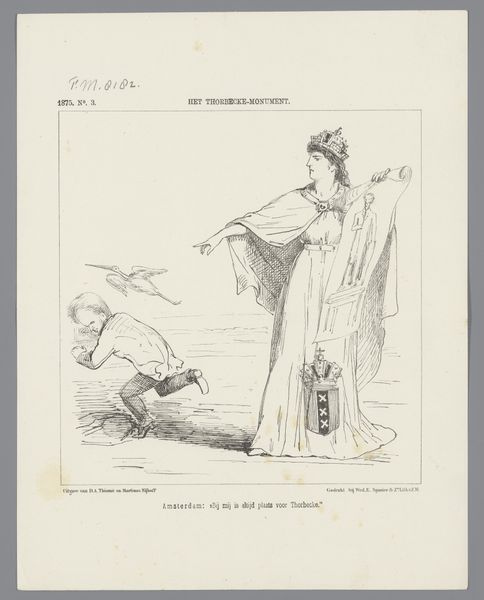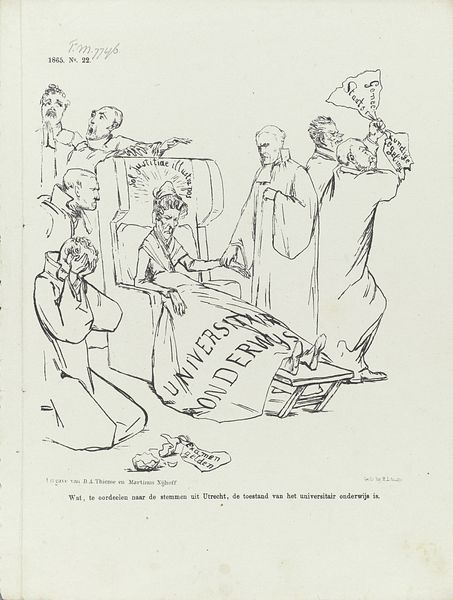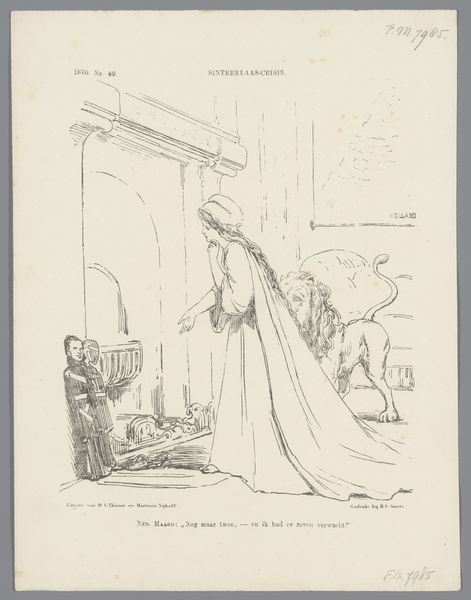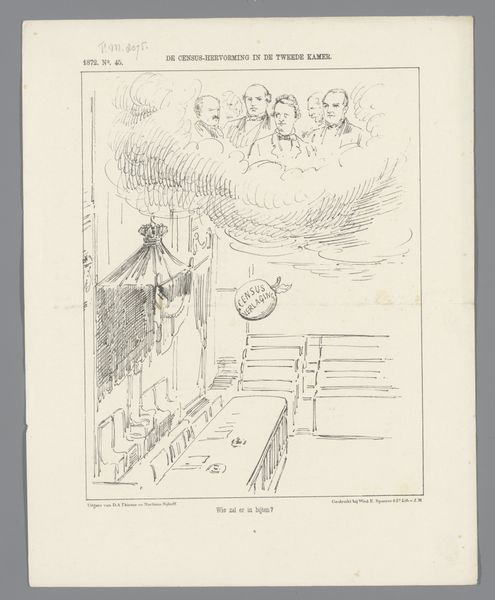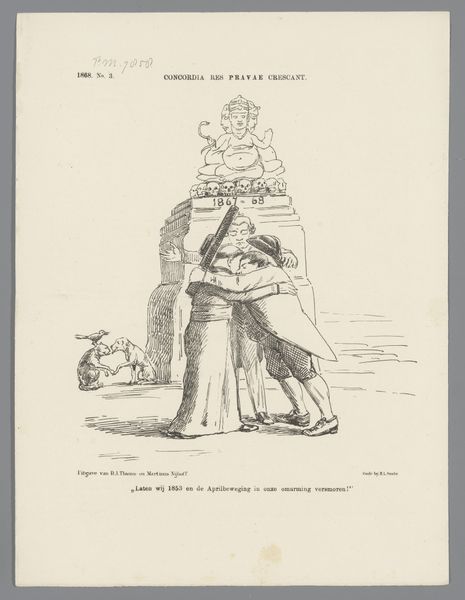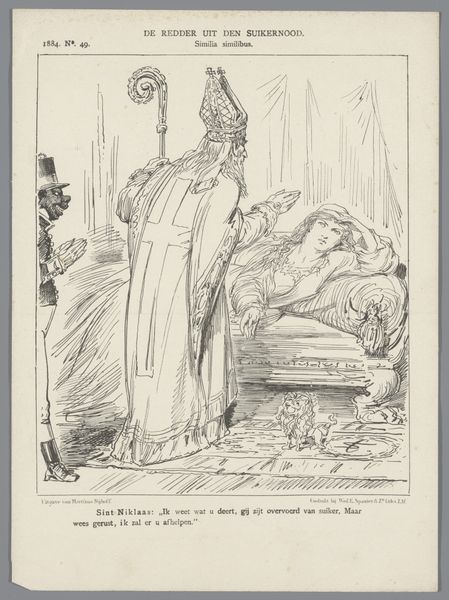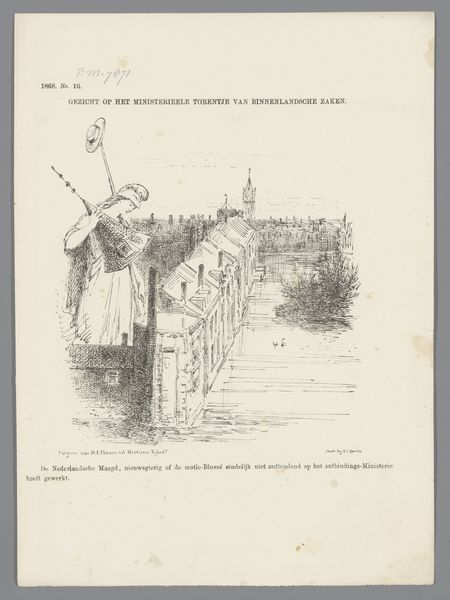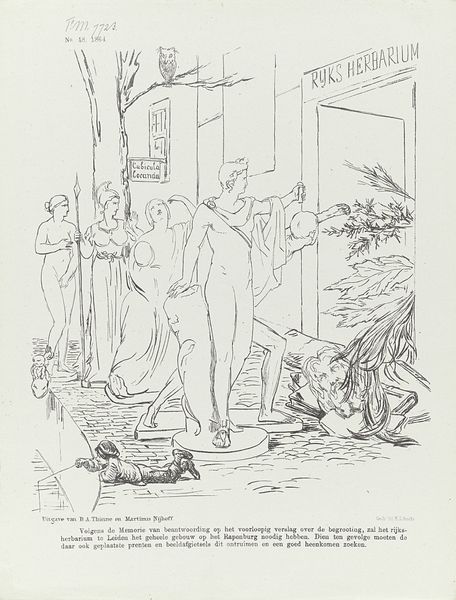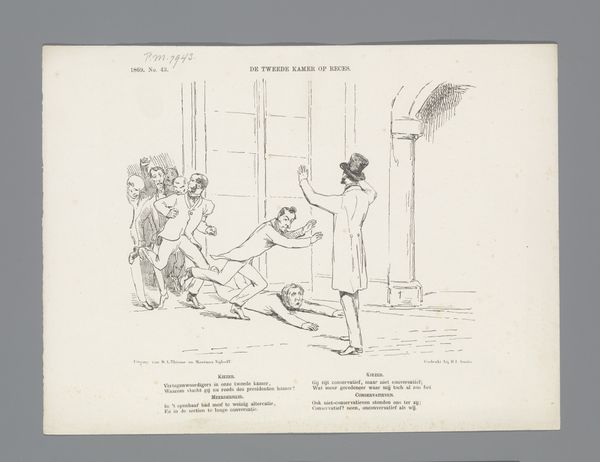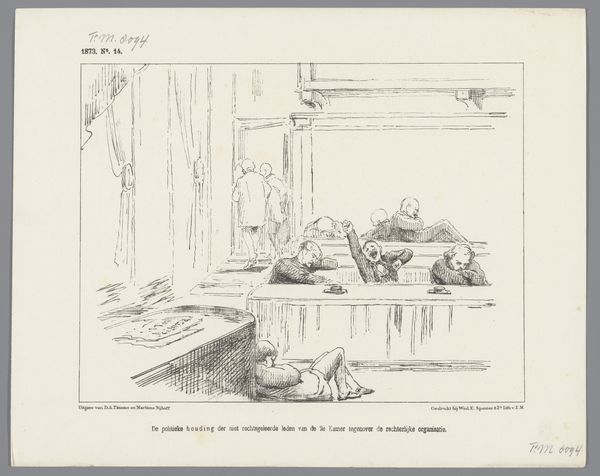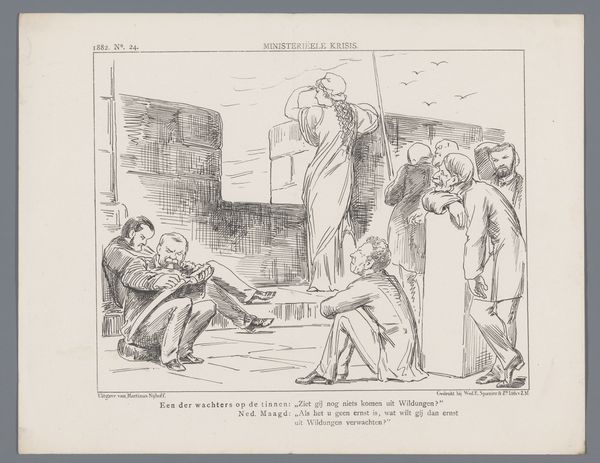
Spotprent met de onthulling van het standbeeld van Hogendorp te Rotterdam, 1867 1867
0:00
0:00
Dimensions: height 215 mm, width 275 mm
Copyright: Rijks Museum: Open Domain
Curator: Welcome. Here we have a print titled "Spotprent met de onthulling van het standbeeld van Hogendorp te Rotterdam, 1867" from Johan Michael Schmidt Crans. It’s an engraving that captures the unveiling of the statue. Editor: It’s rather stark, isn’t it? All sharp lines and contrasts, as expected from an engraving. There is a mood of solemnity around this reveal, almost subdued considering the momentousness of unveiling a public monument. Curator: Indeed. This unveiling wasn't just about honoring Hogendorp, it was also very deliberately aimed at reinforcing ideas related to nationhood and the virtues of mercantile pursuits within Dutch society at the time. Schmidt Crans, by using this specific printmaking technique, comments on the way public memory is shaped. The romanticized portrayal of a city brought into modernity plays well against the social and political discourse of the Netherlands during this time. Editor: Note also how Hogendorp is literally presented here—under wraps and concealed behind layers of cloth. He represents mercantile exchange, global economics, raw goods turned into commodified profit. Hogendorp, in this context, represents colonial success for The Netherlands at the cost of appropriated labor. Curator: Absolutely, the cloth symbolically veils both Hogendorp and the complexities inherent in the very source of his honor—namely the colonies themselves. Crans certainly wasn't ignorant of the social issues represented in his artwork. There's a degree of commentary and judgment baked into this image about labor and social exploitation, even though Hogendorp may have been, and continues to be, viewed uncritically as an individual of virtue. Editor: And that very judgment, in its making, contributes another layer of the socio-political understanding of the history. The artistic value lies not in celebrating the spectacle of its image but questioning what that very celebration conceals. Curator: Agreed. I am grateful that you focused our gaze on this perspective and offered our listeners the chance to ponder the complex narrative that exists beyond what is represented. Editor: Similarly, examining the historical object and all that the choice of material contains serves as a moment of critical reflection that can change the viewers understanding of that subject, like Hogendorp himself.
Comments
No comments
Be the first to comment and join the conversation on the ultimate creative platform.
